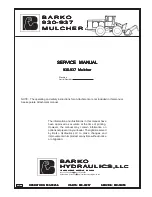
98 . Spotlight 150 User's Guide
Service
All optical and mechanical equipment requires periodic servicing to keep it performing
properly and to compensate for wear. We recommend that the Spotlight 150 is cleaned,
examined, and adjusted periodically by a PerkinElmer Service Representative.
NOTE:
If you experience unexpected problems with the microscope, contact your
PerkinElmer office or representative immediately.
Summary of Contents for Spotlight 150
Page 1: ...Spotlight 150 User s Guide MOLECULAR SPECTROSCOPY ...
Page 5: ...Introduction ...
Page 11: ...Warnings and Safety Information ...
Page 23: ...Overview of the Spotlight 150 ...
Page 32: ...32 Spotlight 150 User s Guide ...
Page 33: ...Getting Ready to Use the Spotlight 150 ...
Page 45: ...Preparing Samples ...
Page 58: ...58 Spotlight 150 User s Guide ...
Page 59: ...Techniques for Collecting Spectra ...
Page 94: ...Maintenance ...
Page 102: ...Appendices ...










































